Why Are Adductor Injuries So Common in Futsal?
The Heroes of Futsal: Your Adductor Muscles
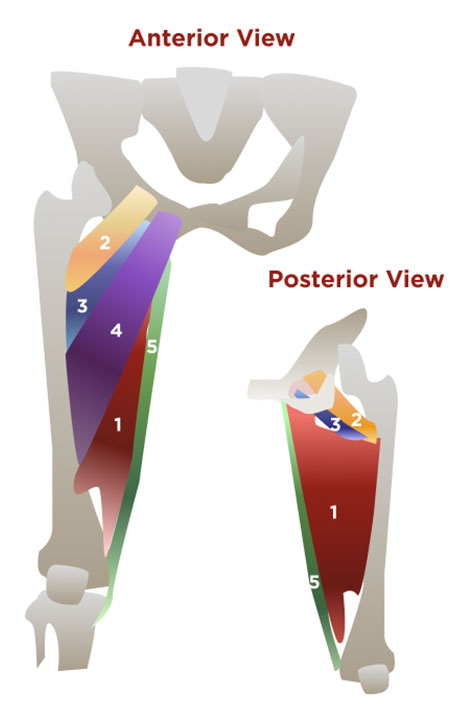
Figure 1 – All 5 adductors muscles
While much attention is placed on hamstrings and quadriceps, the adductors are often the hidden drivers behind power, stability, and injury prevention.
Why?
According to a large-scale UEFA study by Lavoie-Gagné et al. (2021), only 3 out of 4 players returned to match play after an adductor injury, while 1 in 5 suffered a reinjury. Surprisingly, many of those who returned experienced a performance boost in the following season, suggesting that well-structured rehabilitation may not only restore function, but also enhance it.
Futsal is a high-intensity, fast-paced variant of soccer played indoors on a hard court with a smaller, low-bounce ball, it demands quick decision-making, sharp passing, and tight ball control. With two 20-minute halves and minimal stoppages, futsal emphasizes creativity, agility, and technical skill over raw physicality—making it a popular training ground for footballers around the world.
In such a dynamic sport, lower body strength, control, and agility are absolutely essential. One often-overlooked group of muscles that plays a critical role in performance is the adductors (Figure 1), located along the inner thigh. These muscles are key players when it comes to stabilizing the hip, changing direction rapidly, and executing precise ball control. In this post, we’ll break down the anatomy and function of the five primary adductor muscles—and why every futsal player should care about them.
Adductor Longus
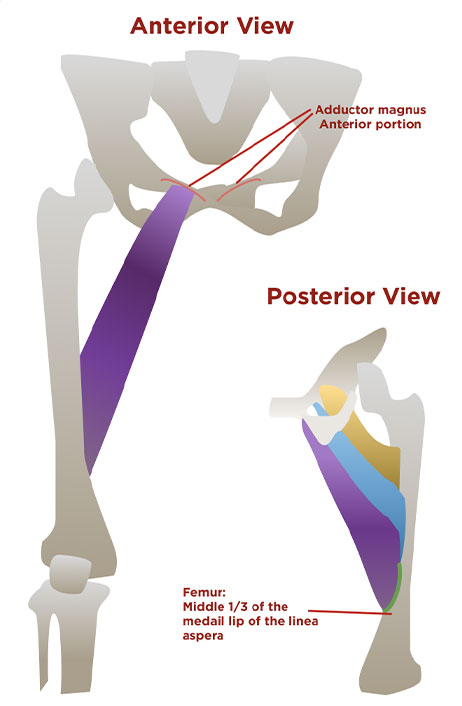
Figure 2 – Adductors longus
The adductor longus lies on the medial side of the thigh and is superficial, making it easily palpable. It originates from the pubis, near the pubic symphysis, and inserts into the middle third of the linea aspera on the femur. Functionally, it is responsible for hip adduction—bringing the thigh toward the midline of the body—and also assists in hip flexion and medial rotation. In the context of futsal, the adductor longus plays a crucial role during lateral movements and when drawing the leg back toward the body after a kick.
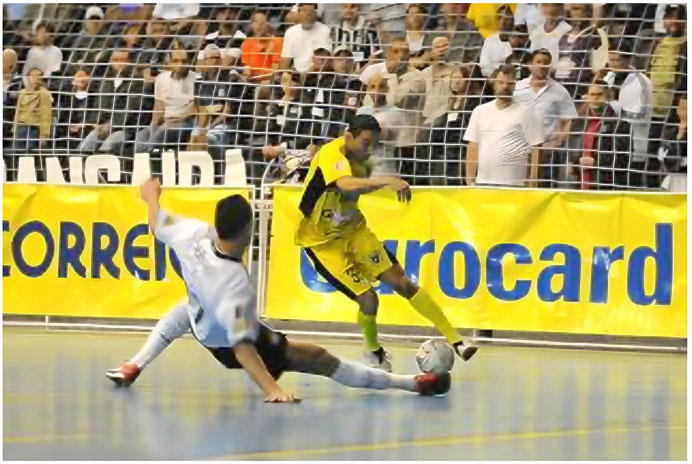
Figure 3 – Hip Adduction: bringing the high toward the midline of the body
Adductor Brevis
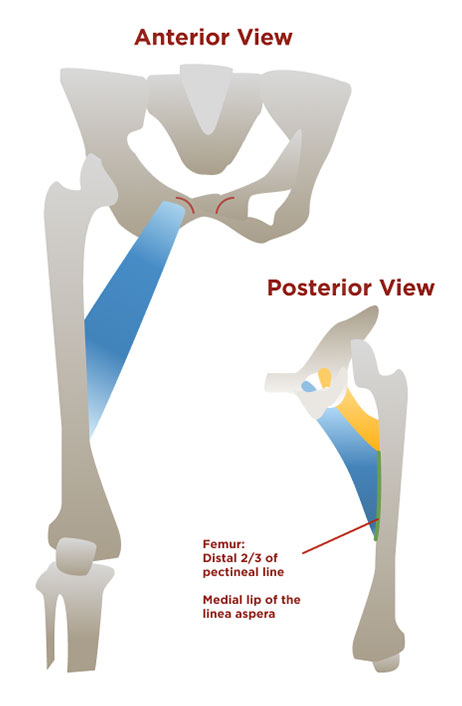
Figure 4 – Adductor brevis
The adductor brevis is located deep to the adductor longus, in the medial compartment of the thigh. It originates from the inferior ramus of the pubis and inserts into the proximal part of the linea aspera of the femur. This muscle assists in adducting the thigh, as well as in flexing the hip. It also contributes to stabilizing the pelvis during dynamic movement. In futsal, the adductor brevis supports quick directional changes and helps maintain balance during high-speed play.
Adductor Magnus
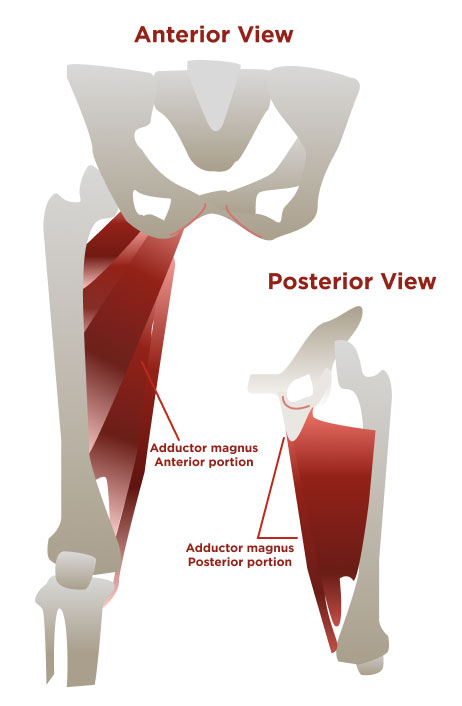
Figure 5 – Adductor magnus
The adductor magnus is the largest and most powerful of the adductor muscles. It is positioned deep within the thigh and spans a broad area. It originates from both the inferior pubic ramus and the ischial tuberosity, and it inserts along the linea aspera and the adductor tubercle of the femur. This muscle is primarily responsible for strong hip adduction. The anterior fibers of the adductor magnus assist in hip flexion and adduction, while the posterior fibers contribute to hip extension. In futsal, this muscle plays a key role in generating force during powerful kicks and sprints, and in stabilizing the pelvis during rapid directional changes and physical contact. (Figure 6)
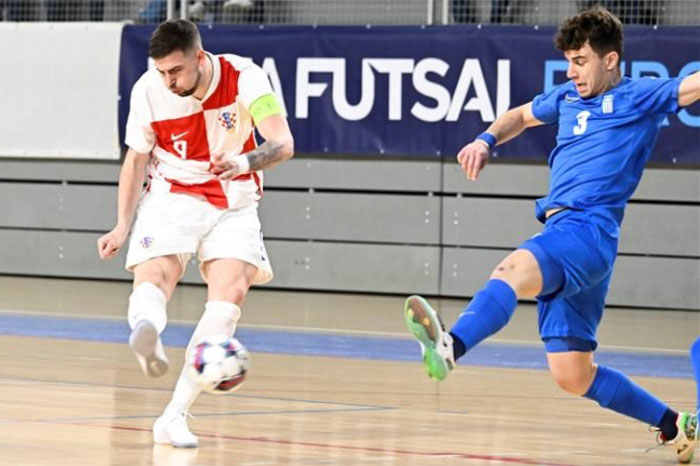
Figure 6 – Player Generating Force During Powerful Kick
Gracilis
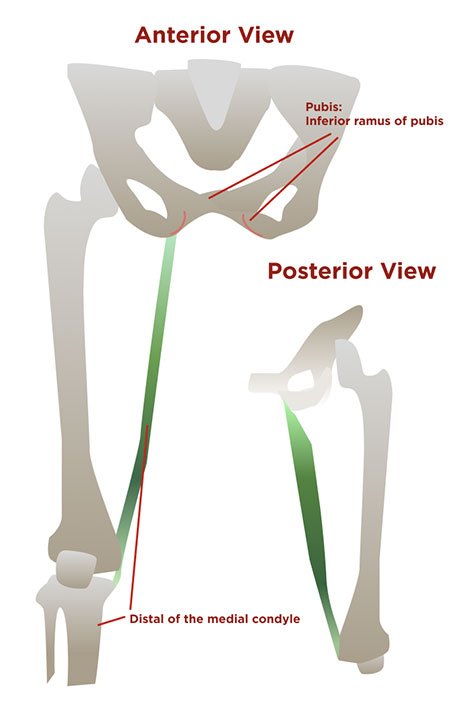
Figure 7 – Gracilis
The gracilis is the most medial and superficial of the adductor group. It originates from the inferior pubic ramus and inserts onto the medial surface of the tibia, as part of the pes anserinus tendon group. Unlike the other adductors, the gracilis crosses both the hip and knee joints. It functions to adduct the hip, flex the knee, and medially rotate the leg when the knee is bent. In futsal, the gracilis is especially active during dribbling, passing, and stabilizing the leg during rapid changes in movement.
Pectineus
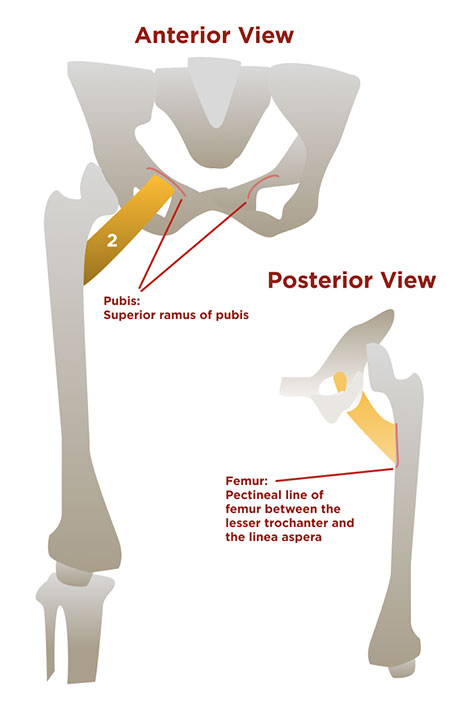
Figure 8 – Pectineus
The pectineus muscle is located in the upper thigh, close to the groin area. It originates from the pectineal line of the pubis and inserts onto the pectineal line of the femur. This muscle is responsible for adducting and flexing the hip, and it also assists in medial rotation of the thigh. In futsal, the pectineus plays an important role in quick, controlled hip movements, helping players stay agile and responsive on the court. Understanding these muscles not only helps in performance enhancement but also in injury prevention—especially in a sport that demands as much sharp lateral movement as futsal.
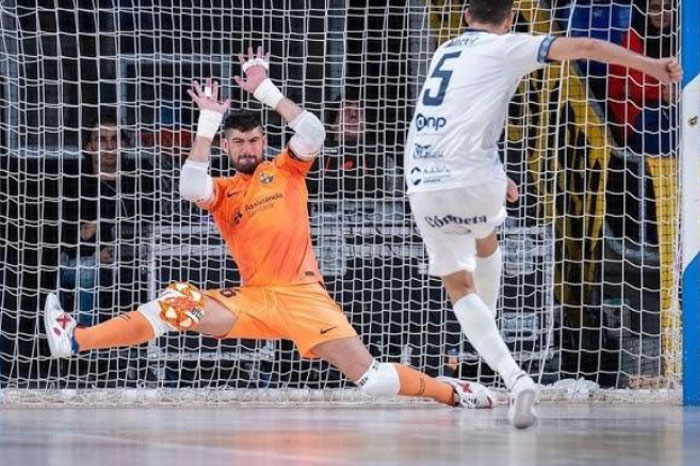
Figure 9 – Pectineus plays an important role in quick, controlled hip movements
Injuries & Rehabilitation
Most Common Injury
The adductor longus is the most frequently injured muscle, primarily due to specific lateral movements and passing or shooting using the inside of the foot.
Groin injuries account for a significant portion of muscle injuries—some studies indicate that 15–20% of all injuries in futsal players are groin-related. These may present as acute strains or chronic pain (commonly referred to as groin overuse syndrome).
Due to their roles in controlling movement and stabilizing the pelvis, the adductors are particularly exposed to stress in futsal. Let’s take a look at the situations in which they are most commonly injured.
Mechanisms of Adductor Injury
1. Sudden Direction Changes & Lateral Movements
Futsal’s small pitch dimensions and rapid ball transitions demand frequent side-to-side movements and quick directional changes (agility). During fast lateral movements, adductors act as hip stabilizers and help guide movement.
Adductor injuries most commonly happen when a player attempts to change direction while the foot remains “gripped” to the surface.
If the force moment is too great and adductor strength is insufficient, eccentric overload can lead to microtrauma or even rupture.
2. Swinging / Kicking with the Inside of the Foot
During powerful kicks or frequent short passes using the inside of the foot (a common futsal technique), the adductors pull the leg forcefully inward.
If this contraction is rapid and forceful—and the muscle is fatigued or unprepared—a partial tear may occur.
The kicking mechanism also involves trunk and pelvic torsion, adding strain to the tendons around the hip.
According to a systematic meta-analysis by DeLang et al. (2021), the dominant leg in soccer players has a 1.6 times higher risk of injury, with groin injuries occurring almost twice as often on the dominant side.
3. Reaching for the Ball / Interceptions / Splits (Goalkeepers) or Sliding Tackles
These involve extreme range of motion combined with active muscle contraction, which is a high-risk combination for adductor rupture, especially at the muscle-tendon junction.
4. Fatigue, Repetition, and Neuromuscular Dysfunction
In a competitive microcycle, players often face high weekly loads without proper rest. A fatigued muscle has reduced contraction ability, slower reaction times, and poorer movement control, all of which increase injury risk.
Acute fatigue-related injuries often happen late in the second half.
Chronic adductor injuries develop through repeated submaximal loads (frequent kicking, lateral sprints/stops) without enough recovery, causing microtears that accumulate into an overuse syndrome.
Adductor Injury Rehabilitation
General Goals of Rehabilitation:
Authors:

Ivica Klunić
Founder of Elite Conditioning, expert in fitness, conditioning, and nutrition. His mission is to utilize sports science for recreation and daily life demands, empowering individuals to reach their fullest potential through personalized approaches. Recognizing the absence of a universal fitness and nutrition approach, he prioritizes individualization, tailoring programs to align with each person’s goals, abilities, and preferences. Ivica is also an author and mentor at Ultrax HUB.
His aim is to foster awareness of healthy living and cultivate lasting habits, while ensuring clients enjoy the journey toward their goals, free from stress. By leveraging nature’s resources, such as outdoor exercise, Ivica not only enhances physical well-being but also promotes mental refreshment and connection with the environment.
Through collaboration with the scientific community, he seeks to advance research and apply sports science in ways that benefit everyone, regardless of their fitness level or aspirations.

Luana Šturbej
Strength and conditioning coach with extensive experience in physical preparation and rehabilitation of athletes in football and futsal. I specialize in combining evidence-based training principles with a personalized approach – from return-to-play protocols for injured athletes to high-performance conditioning for elite-level competition.
Alongside athletic development, I work in the rehabilitation of injuries such as ACL reconstructions, ankle sprains, and muscle ruptures. Through years of experience in football and futsal environments, my focus has evolved toward developing motor abilities, implementing injury prevention strategies, and guiding athletes through safe and effective rehabilitation processes specific to the demands of these sports. Luana is also an author and mentor at Ultrax HUB.




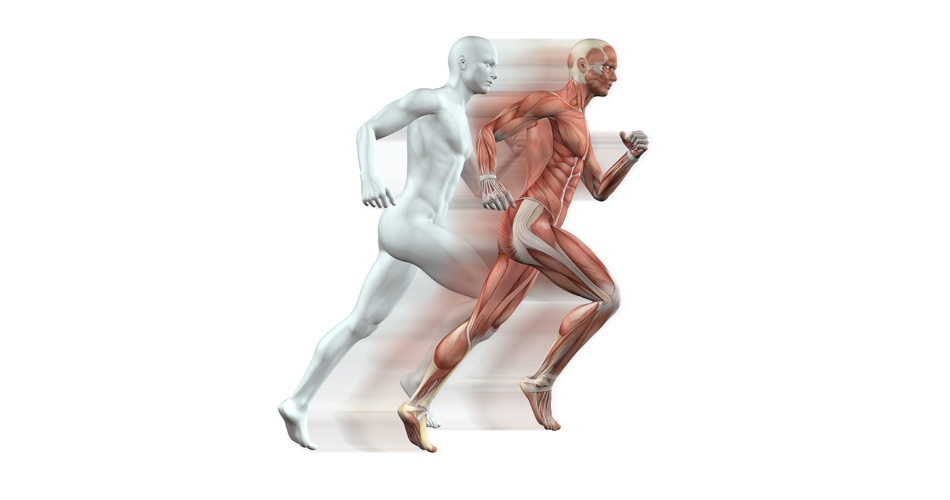
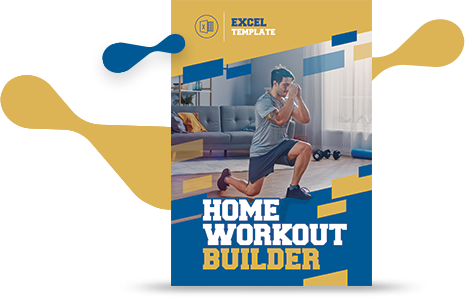





Responses